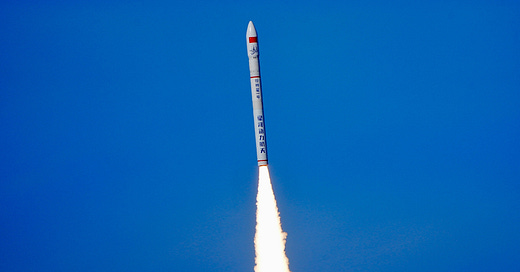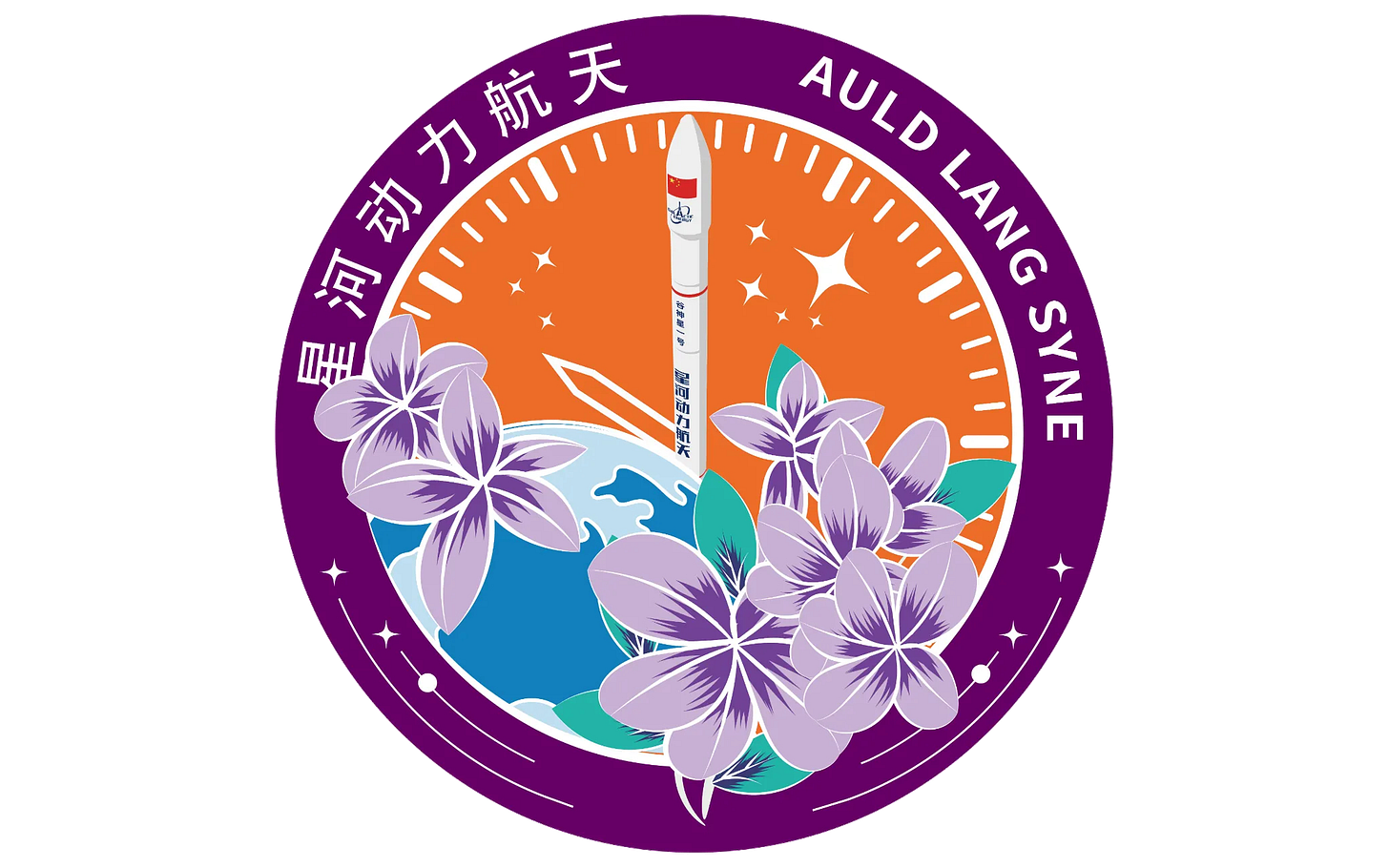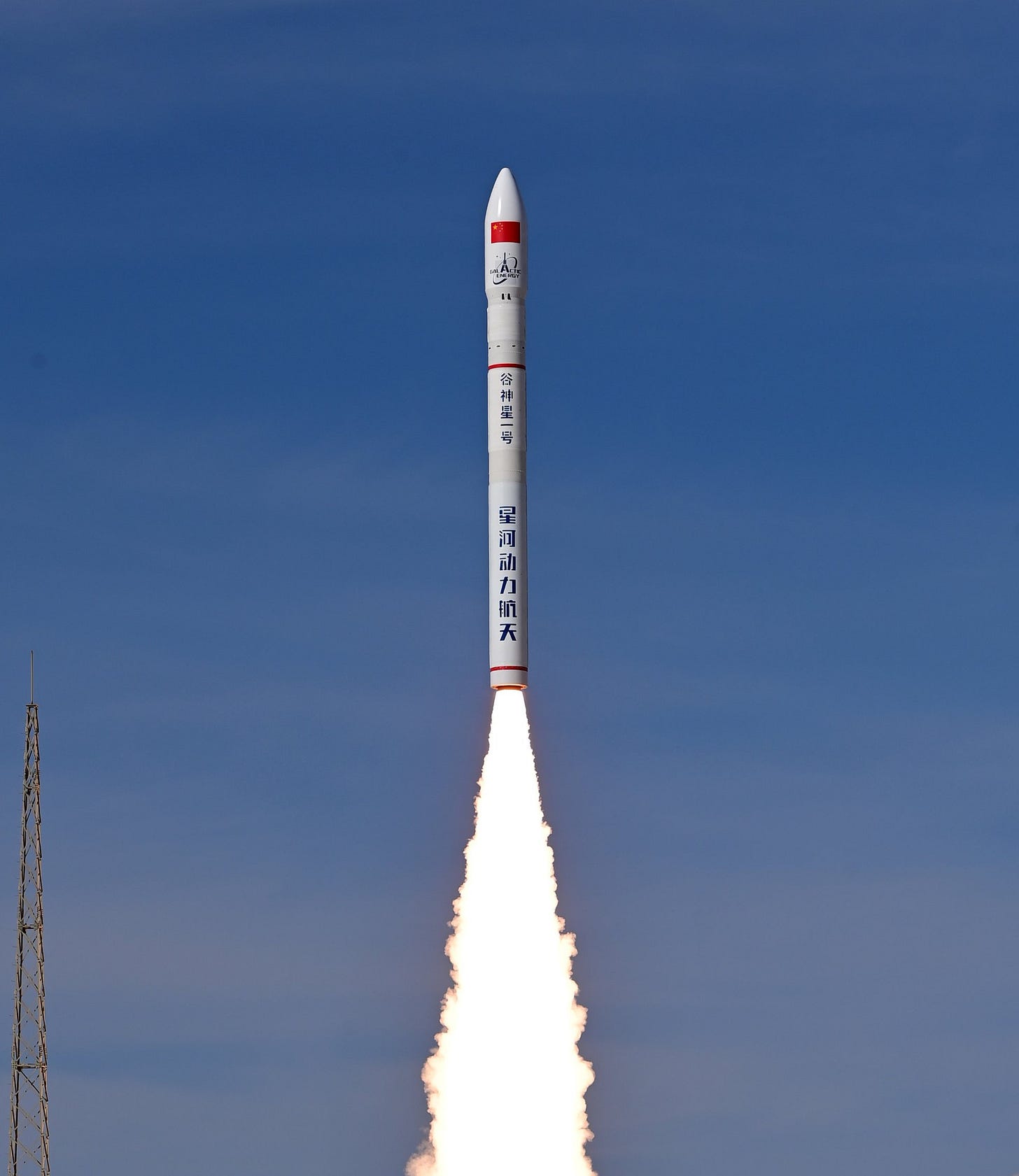Back in Business from Jiuquan [Ceres-1 Y10]
Galactic Energy has launched more meteorology satellites for a repeat customer.
Galactic Energy’s Ceres-1 blasted off from Launch Area 95A at 16:07 pm China Standard Time, or 08:07 am Universal Coordinated Time, on March 17th for its second mission of the year. This mission had the rocket heading to a 535-kilometer sun-synchronous orbit from the Jiuquan Satellite Launch Center carrying eight satellites.
Six of the satellites, numbered 55 through 60, were Yunyao-1 (云遥一号) meteorological satellites from Yunyao Aerospace (云遥宇航), which are working to establish a ninety-satellite meteorology constellation. Four satellites were launched atop of a Ceres-1 in January too, with the constellation now having forty-eight satellites in orbit.
Each of the Yunyao-1 satellites has a global navigation satellite system radio occultation payload along with an infrared imager to provide regular and accurate weather services through the constellation. These satellites will assist in weather prediction, magnetic storm monitoring, and ocean forecasting.
The two other satellites riding into sun-synchronous orbit were the Zhongke 06 (中科卫星06) and Zhongke 07 (中科卫星07) remote sensing satellites with an imaging resolution of two meters, the two spacecraft are also referred to as AIRSAT. The two Zhongke satellites are part of a growing fleet of Earth observation satellites to provide high-quality imagery for use in agriculture and forestry monitoring, disaster mitigation, and environmental monitoring.
The Ceres-1 flying today’s mission was stated by Galactic Energy, in its post-launch blog post, as being the second launch vehicle produced at the company’s new production base in Ziyang (资阳市), Sichuan Province (四川). Additionally, the company said that through seventeen successful missions, it has delivered seventy-one satellites into orbit.
Galactic Energy had been planning to launch this mission, and another expected later this week, back at the beginning of the month. Those missions were delayed after ExPace’s Kuaizhou-1A was destroyed either on the launch pad or shortly after liftoff. Since that event, Launch Area 95A has been repaired and cleaned up to facilitate a potentially busy year.
Today’s launch was the 14th mission for Ceres-1, and the 18th launch for the Ceres-1 launch vehicle series (Ceres-1 and Ceres-1S). This was also the 14th launch from China in 2025.
Liftoff video via Cosmic_Penguin on Twitter and 我们的太空 on Weibo
Check out the previous Ceres-1 launch
Ceres-1 performs China's first private sector launch for 2025 [Ceres-1 Y16]
Galactic Energy has begun its 2025 launch campaign with the liftoff of Ceres-1 from the Jiuquan Satellite Launch Center at 18:11 pm China Standard Time, or 10:11 Universal Coordinated Time, heading to sun-synchronous orbit.
What is Ceres-1/1S?
This section is for those less familiar with China's commercial launch vehicles.
Galactic Energy’s Ceres-1, and its sea launch version Ceres-1S, is a four-stage launch vehicle that burns solid fuel in the first three stages, and a storable propellant in the fourth-stage. The fourth-stage can also be replaced with the company’s Eros orbital test platform.
The payload capacity of the launch vehicle is currently as follows:
420 kilograms to low Earth orbit
300 kilograms to a 500-kilometer sun-synchronous orbit
270 kilograms to a 700-kilometer sun-synchronous orbit
The first-stage is powered by a solid rocket motor that burns an undisclosed solid propellant to produce 60 tons of thrust. The second-stage also burns an undisclosed solid propellant to produce 28 tons of thrust. The third-stage is the final solid rocket stage, once again burning an undisclosed solid propellant, producing 8.8 tons of thrust. The fourth-stage burns a storable liquid Monomethylhydrazine and mixed oxides of nitrogen fuel in an ‘attitude control thruster’ to generate 1 ton of thrust.
On the launchpad, Ceres-1 weighs 33,000 kilograms and stands 20 meters tall. The first, second, and third stage have a diameter of 1.4 meters while the fairing has a diameter of 1.6 meters.
So far Ceres-1 vehicles have flown from the Jiuquan Satellite Launch Center and various sea-based launch platforms.







![Ceres-1 performs China's first private sector launch for 2025 [Ceres-1 Y16]](https://substackcdn.com/image/fetch/w_1300,h_650,c_fill,f_auto,q_auto:good,fl_progressive:steep,g_auto/https%3A%2F%2Fsubstack-post-media.s3.amazonaws.com%2Fpublic%2Fimages%2Fc705835a-7585-4546-9030-6b19289607a9_4258x2583.jpeg)
